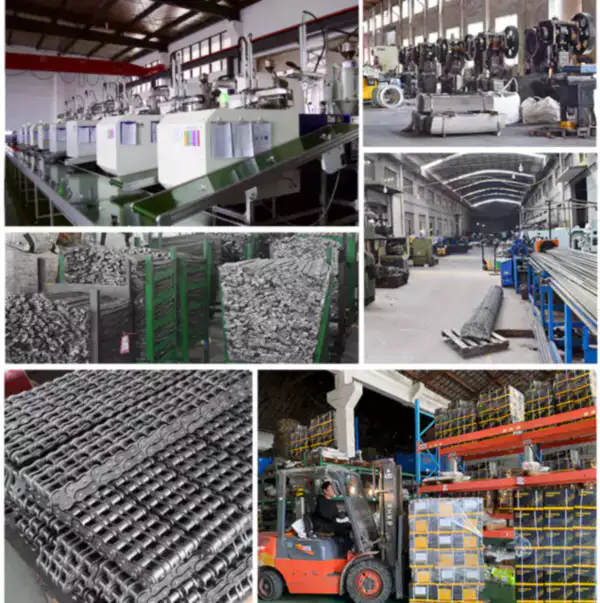Gripper chains are an essential component of conveyor systems used in various industries. These chains are responsible for moving products from one point to another along the conveyor belt. However, with constant use, they are prone to wear and tear, which can lead to unexpected downtimes, costly repairs, and production losses. To prevent these issues, it is crucial to implement a preventive maintenance program for gripper chains. In this article, we will discuss how to create a preventive maintenance program for gripper chains.
Understanding Gripper Chains
Gripper chains are designed to provide a positive drive to convey products without slipping. They are commonly used in the automotive, food, and beverage, and packaging industries. These chains are made up of pins, plates, and rollers that work together to move the products along the conveyor belt. They are available in different sizes, and the selection depends on the application and load requirements.

Importance of Preventive Maintenance Program
A preventive maintenance program is a scheduled maintenance approach intended to prevent breakdowns and reduce repair costs. Implementing a preventive maintenance program for gripper chains is essential to keep them in good condition and prevent unexpected downtimes. Here are the steps to implement a preventive maintenance program:
Step 1: Develop a Maintenance Checklist
The first step is to develop a maintenance checklist that outlines all the tasks that need to be performed to keep the gripper chains in good condition. The checklist should include tasks such as lubrication, chain tensioning, and inspection of the chains for wear and tear. The maintenance checklist should be tailored to the specific chain and conveyor system in use.
Step 2: Schedule Maintenance Tasks
The next step is to schedule maintenance tasks based on the manufacturer's recommendations and the conveyor system's operating conditions. Maintenance tasks should be scheduled during planned downtime to minimize the impact on production.

Step 3: Train Maintenance Personnel
It is essential to train maintenance personnel on the maintenance tasks required for gripper chains. They should be trained on how to identify issues, perform maintenance tasks, and document maintenance activities.
Step 4: Document Maintenance Activities
All maintenance activities should be documented in a maintenance log. The log should include the date of maintenance, the maintenance tasks performed, and any issues identified during the maintenance activity. This log will help track maintenance activities and identify recurring issues.
Step 5: Monitor Chain Wear
It is essential to monitor chain wear regularly. Chain wear can lead to chain elongation, which can cause the chain to jump or fall off the sprocket, leading to unexpected downtimes. The chain's wear can be monitored using a wear gauge, and the chain should be replaced when the wear exceeds the manufacturer's recommendations.
Implementing a Preventive Maintenance Program is Important
Implementing a preventive maintenance program is essential to keep the gripper chains in good condition and prevent unexpected downtimes. By following the steps outlined in this article, you can develop a preventive maintenance program tailored to your conveyor system's needs. Remember to schedule maintenance tasks, train personnel, document maintenance activities, and monitor chain wear.
Gripper Chains Purchasing Guide
| Product | Description |
| Gripper Chain Type A | Designed for light to medium-duty applications |
| Gripper Chain Type B | Designed for heavy-duty applications and high-speed conveyors |
| Gripper Chain Type C | Designed for high-temperature applications |
Sprockets for Gripper Chains
Sprockets are an essential component of gripper chains. They provide the positive drive required to move the products along the conveyor belt. The sprockets are designed to match the gripper chain's pitch and tooth profile. At our company, we offer a range of sprockets designed to work with our gripper chains. Our sprockets are made from high-quality materials and are heat-treated for maximum durability. We understand the importance of sprockets in maintaining the gripper chains' performance, and we offer a range of sprockets to match our gripper chains' specifications.

Our Advantages
- We are a leading manufacturer of gripper chains
- We offer a wide range of gripper chains for different applications
- Our gripper chains are made from high-quality materials
- We offer customized solutions to meet specific requirements
- Our gripper chains come with a warranty

Q&A
Q: How often should gripper chains be replaced?
A: Gripper chains should be replaced when the wear exceeds the manufacturer's recommendations.
Q: How can I prevent chain elongation?
A: Regular maintenance, lubrication, and proper tensioning can prevent chain elongation.
Q: Can I use any sprocket with my gripper chain?
A: No, it is essential to use sprockets that match the gripper chain's pitch and tooth profile to ensure proper performance.
Edited by Zqq.
